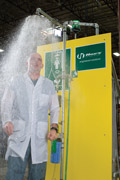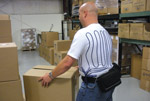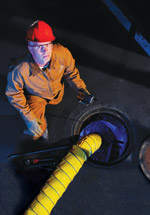By Richard B. Jaffe
The health care industry is a hotbed for continual waves of technological innovation and advancement, so why are front-line medical workers relying on respirator technology that hasn't changed much in more than 20 years? And why are manufacturers of personal protective technology so slow in responding to continuous complaints about respirator comfort and breathability?

By Casey Hayes
People's reaction to being hit with cold water has been used in comedy routines for many years. Providing it's not you being doused, it can be really funny. But cold water is no joke when used in emergency showers and eye/face washes. While a cold shower might be invigorating, it can be downright dangerous to run un-tempered or cold flushing fluid through industrial emergency equipment.

By Bruce Baker, John LaDue
NIOSH notes in its publication "Occupational Exposure to Hot Environments," (1986) that although workers can acclimatize themselves to different levels of heat, each worker has an upper limit for heat stress beyond which that worker can become a heat casualty. Further, it has been shown that a worker's ability to focus attention and the worker's reaction times can be dramatically reduced by even a 2 percent dehydration level due to heat stress.
By Scott Margolin
Since the inception of the NFPA 70E 2000 Edition 10 years ago, there has been a major evolution in our understanding of the electric arc flash hazard.

By Thomas Suski
If you are responsible for the health of your gas detection program, now is a great time to get it into shape. And if you want to keep your gas detection program healthy and keep your people going home safely at the end of each day, exercise your data analysis muscles by following a routine of reviewing the information stored in your gas detectors.
By Tom Jacques
The majority of employers in the United States would not argue the point that the Hazard Communication Standard (HCS) has cost their company an incredible amount of time, money, and grief since its inception. Though it is a great concept, I question whether the HCS, even after more than 20 years in existence, has produced more than a few positive results in the eyes of most employers and employees.
By Robert Pater
Safety is the ultimate self-defense. While a leader might never be physically attacked, he will likely be sometimes swarmed by multiple problems, probed for weaknesses by seeming adversaries, or off-balanced by forces of swirling change. Even confronted with situations that can result in accidents and injury.